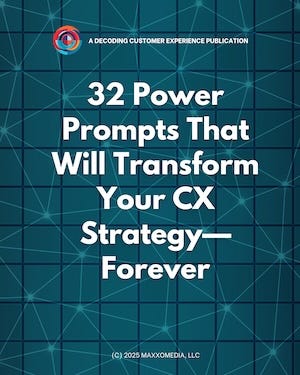DCX Links | April 13, 2025
CX Isn’t Broken — But It Might Be Headed That Way
📌🚀 Make faster, smarter CX decisions in under 10 minutes—free for a limited time.
Say goodbye to overwhelm and hello to crystal-clear prioritization. Download your free set of 32 GenAI prompts right now. Prioritize smarter, communicate better, and achieve tangible results—starting today.
You’ll get plug-and-play prompts to:
✅ Rank initiatives by ROI, urg…
Keep reading with a 7-day free trial
Subscribe to Decoding Customer Experience to keep reading this post and get 7 days of free access to the full post archives.



